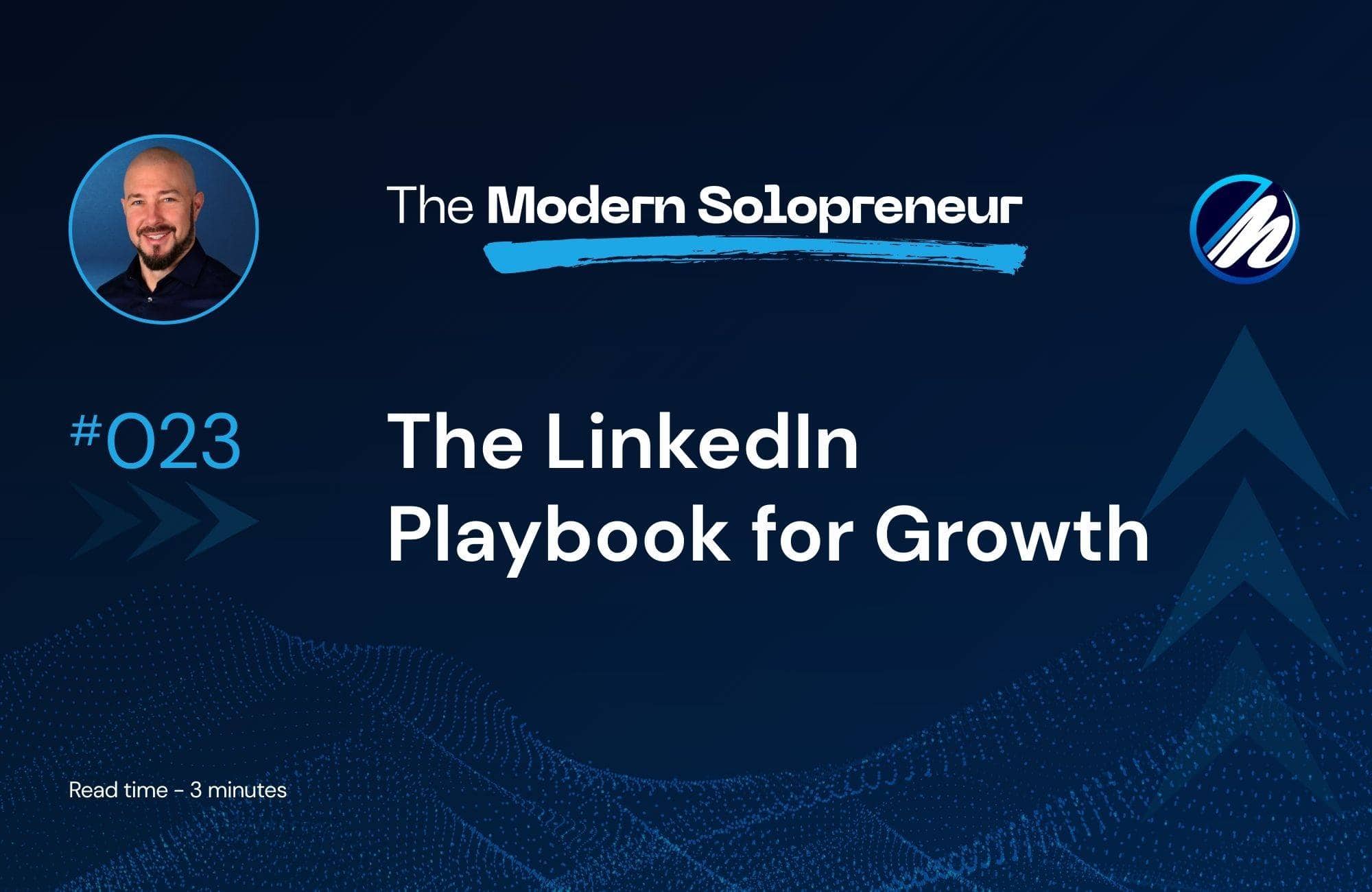Read time: 4 minutes
I’m about to show you the exact blueprint that took me from scratch to building a strong LinkedIn presence in record time.
And the best part?
I’ll walk you through it step by step, even if you’re starting from scratch.
No niche? No audience? No clue what to post?
It still works.
But here’s the truth: I’m not going to recycle the same tired LinkedIn tips you’ve already seen.
Because if those worked… everyone would be winning.
LinkedIn has changed.
It’s no longer about chasing likes.
The algorithm now rewards conversations, niche expertise, and consistency.
If you know how to play the new game, LinkedIn can become your biggest growth engine:
✅ More visibility (presence)
✅ More authority
✅ More clients
Why most people fail
- They post random stuff without a system
- They chase vanity metrics (likes, impressions)
- They burn out after a few weeks of inconsistency
Sound familiar?
Outdated LinkedIn Hacks = Growth Sabotage
There are no hacks here.
What works now is a repeatable system:
👉 Clear positioning
👉 Consistent posting
👉 Turning posts into real conversations
By the end of this guide, you’ll have a clear roadmap to grow without burning out.
How to Win LinkedIn Growth (7 Steps)
Here’s the 7-step blueprint you need to grow on LinkedIn in 2025.
- Positioning (Fix Your Profile)
- Attention Game (Play Like Big Brands)
- Content Strategy (Educate + Storytell)
- Transformation Post (Storytelling Template)
- Educational Storyteller Framework
- Engagement Strategy (Build Community)
- Consistency + Reciprocity
Step 1: Positioning (Fix Your Profile)
This is where 99% of people go wrong.
Think about it: if Nike opened a store with no logo, no design, no story—you’d probably walk right past it. Not because the shoes aren’t great, but because nothing tells you they’re worth your attention.
That’s exactly what’s happening with most LinkedIn profiles. People scroll past because there’s no clear signal:
✅ Who you are
✅ What you do
✅ Why you’re worth following
Your profile isn’t a résumé anymore—it’s your landing page. Nail the headline, about section, and banner so people instantly “get it.”
Example: See my LinkedIn Bio Section
Step 2: Attention Game (Play Like Big Brands)
Before we even talk about monetization, you need attention.
This is the game every big brand plays—Apple, Nike, Tesla. They don’t just sell, they capture attention first.
The problem? You’re not Apple. You don’t have billions to spend on ads.
But you do have LinkedIn.
And if you know how to play the attention game with content, hooks, and consistency, you win.
👉 Focus on writing strong hooks, posting 3x per week, and keeping a steady cadence.
Step 3: Content Strategy (Educate + Storytell)
Content is where you start turning attention into authority.
The best personal brands do two things really well:
- They educate (share knowledge that solves problems)
- They storytell (share personal experiences people relate to)
That’s how you grow your audience and position yourself as the go-to expert.
This is where you start giving value for free—so when it’s time to sell, people already trust you.
Step 4: Transformation Post (Storytelling Template)
Start with storytelling. Why?
Because no one cares what you do until they care about you.
Here’s the template I use for a story post (I call it the Transformation Post):
- Share where you started
- Share the struggles you faced
- Share the turning point (the lesson or breakthrough)
- Share where you are now
It’s simple. And it works. People remember stories more than pitches.
Step 5: Educational Storyteller Framework
Now that people know who you are, teach them what you do.
This is my favorite type of post, the Educational Storyteller Framework.
It works like this:
- Tell a quick story or experience
- Pull out the lesson
- Give them a simple, actionable takeaway
This blend of story + teaching makes your content relatable and valuable.
💡 Pro tip: use the S.L.A.V.E. framework (Stories, Lessons, Action, Value, Examples) to structure posts.
Step 6: Engagement Strategy (Build Community)
Content is only half the battle. Engagement is where the magic happens.
Think of LinkedIn like your local gym—you don’t just show up, flex once, and leave. You talk to people, spot them, and build connections.
On LinkedIn, that means:
✅ Replying to every comment
✅ Starting real conversations in DMs
✅ Commenting on other people’s posts (with something meaningful)
Set aside just 15 minutes per day for this, and you’ll build community—not just a follower count.
Step 7: Consistency + Reciprocity
This is the final piece: play the long game.
LinkedIn growth is both:
- Quality → posting valuable content
- Quantity → showing up often in other people’s feeds
Commit to a 3x weekly posting cadence and focus on giving more than you take—because consistency compounds, and reciprocity creates real momentum.
Final Thought
When you put this system together — positioning, attention, content, engagement, and consistency — LinkedIn stops feeling random. It becomes a growth engine you can rely on.
By following this playbook, you’ll stop posting into the void and start building real traction on LinkedIn. Apply it today and you’ll see the difference compound over time.
🔥 PRE-RELEASE OFFER
🧭 If you’re stuck, it’s because you don’t have a step-by-step blueprint. Let’s fix that.
I’m releasing the 1-Offer Playbook soon — the framework to build a single clear offer, a simple funnel, and a content system that brings clients to you without endless chasing.
Join the waitlist today and be among the first 20 people to get lifetime access for free (yes, free, spots are limited) — a $450 value.
